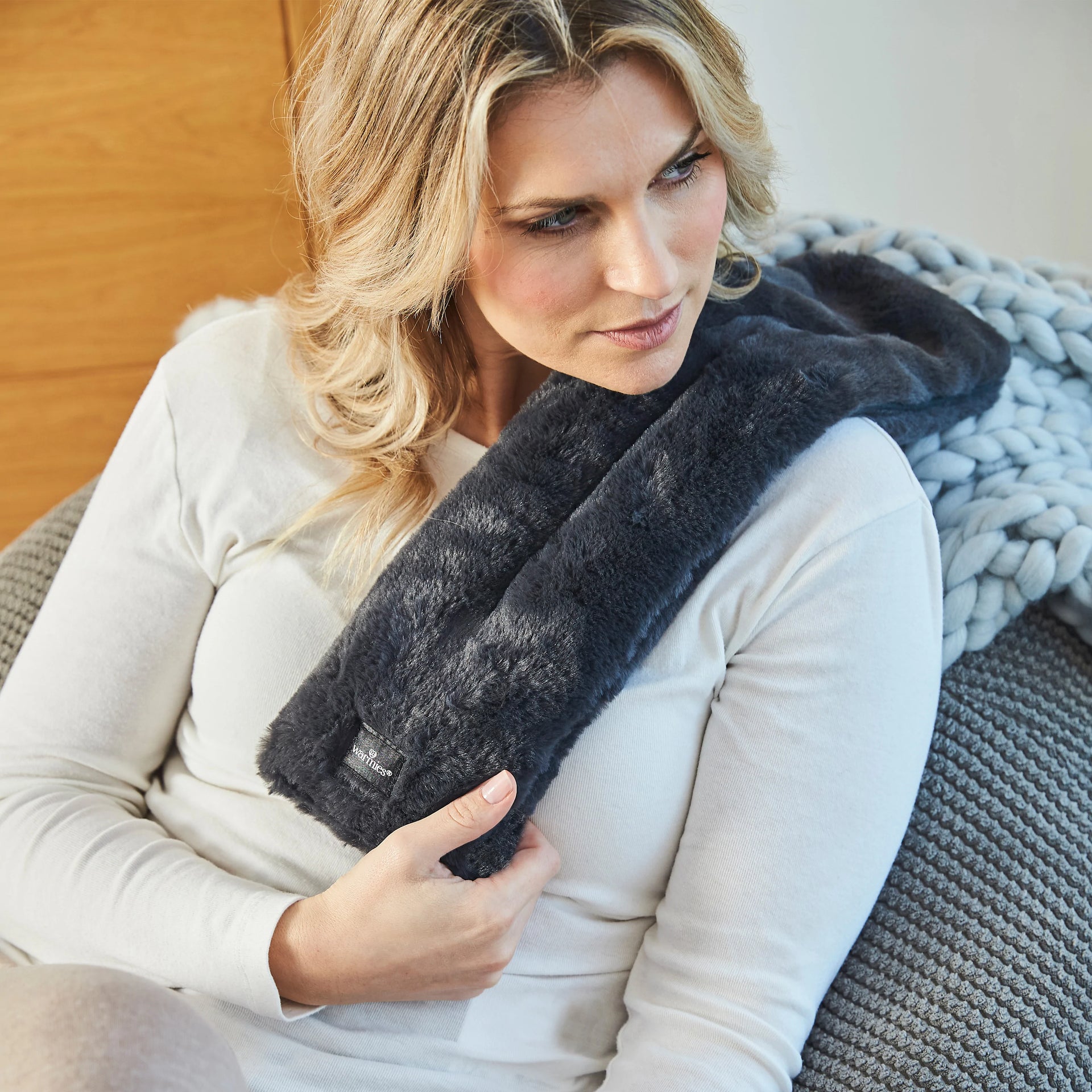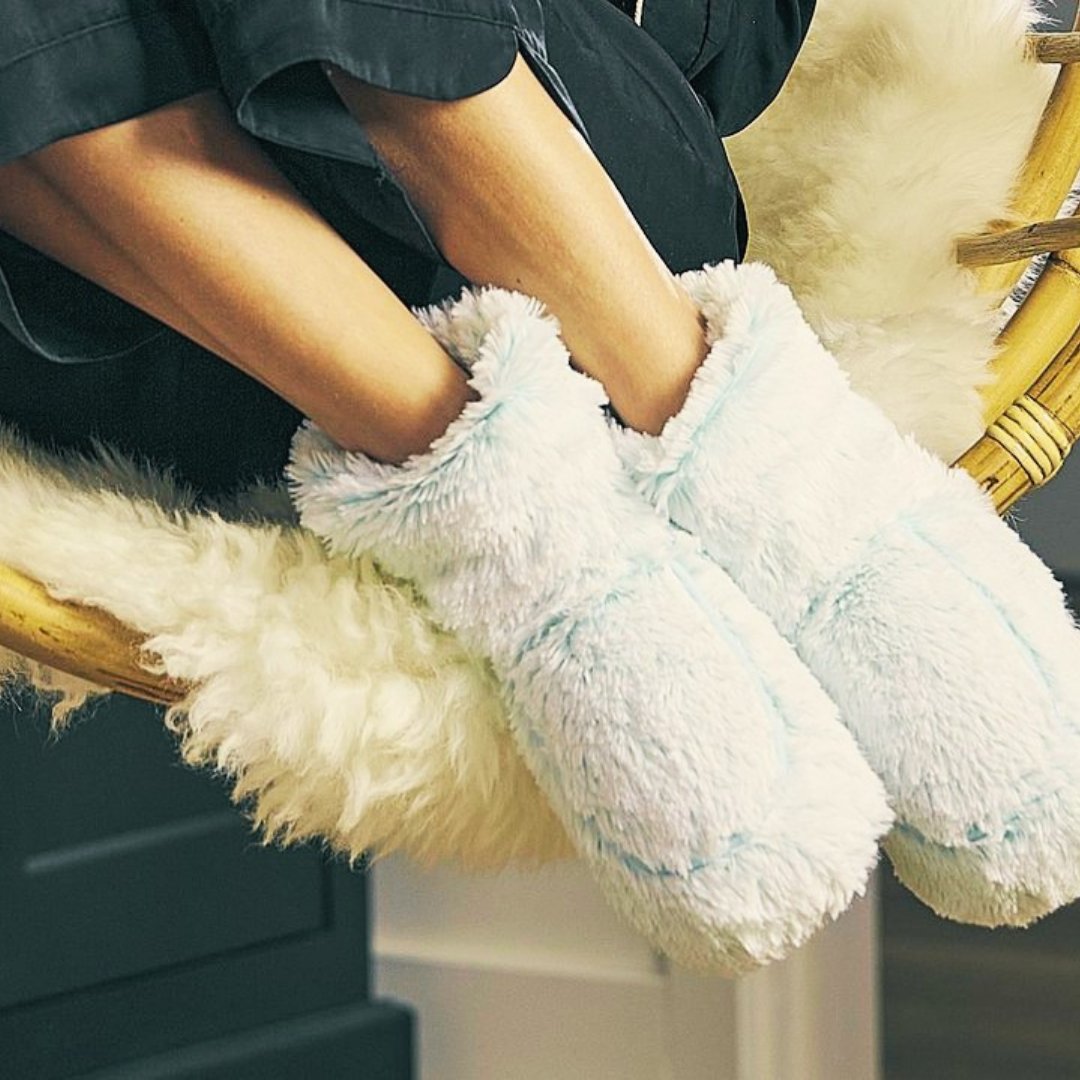The Essential Guide to Keeping Warm with a Microwave Wheat Bag
Popular sections:
Purpose of guide
Microwave wheat bags, also known as microwave body warmers, can be great for keeping you warm (or cooling you down) and providing comfort throughout the year including on cold winter nights and mild summer evenings when you choose to spend time outdoors.
Their aromatic nature makes microwave warmers great to aid relaxation, alleviate stress, ease aches and pains as well as help you enjoy a good night’s sleep. Their weighted nature also provides sensory and soothing benefits which may contribute to your overall wellbeing.
Despite these benefits, many people simply do not know how to get the most out of their microwave wheat bags effectively and safely. In this guide we shall walk you through everything you need to know to get the most out of yours.

What are microwave wheat bags and how do they work?
Microwave wheat bags, which are also known by other names such as microwave body warmers, microwave heat packs and microwave heating pads, are composed of a soft fabric outer cover, typically cotton, filled with specially prepared wheat or flaxseed. These natural fillers are treated to retain a specific moisture content which allows them to absorb and retain heat.
When heated in a microwave, the wheat or flaxseed inside the bag absorbs and stores heat, which is then gradually released. This provides soothing warmth for up to an hour. The cotton layer helps regulate the flow of this heat for consistent comfort.
Additionally, many of these wheat bags come infused with aromatic essential oils, like lavender, which are released during heating for added relaxation. These bags are versatile, as they can also be used for cold treatments, effectively storing and releasing cool energy.
How to choose the right microwave wheat bag?
Microwave wheat bags are great alternatives to hot water bottles. These days microwave body warmers come in all shapes and sizes and cater to a wide range of uses. It's essential to know the different types available to find the perfect fit for your needs..
Microwave hot water bottles, or microwave bottles, resemble traditional hot water bottles in shape. However, unlike the usual hot water fill, they contain flaxseed or wheat for microwave heating
Microwave neck warmers and microwave back warmers are long and narrow. They easily wrap around your neck, shoulders, or back for soothing warmth. These warmers are particularly great if you are suffering from pains or aches or simply want to wind down.
Microwave hand warmers are light and convenient ways of keeping your hands warm especially when you are outdoors in the cold. They typically fit quite nicely into your pocket.
Microwave feet warmers and slippers are great for warming up your feet and keeping them warm and relaxed. Keeping your feet warm is a great way to boost circulation within your body. Microwave feet warmers come in a range of styles, including boots and slippers.
Heatable toys, such as microwave animal toys are other types of microwave wheat bags. These often take the form of cute animals and can be heated up for use by children and adults alike.
There are plenty of other types of heatable products such as heatable eye masks to relax your eyes and help you sleep, as well as therapeutic gel beads to help soothe you and ease pains.
→ Shop now: Our microwave wheat bags collection
Video on how to use a microwave wheat bag safely
How to check your microwave wheat bag is safe?
You must inspect your microwave wheat bag thoroughly before using it for the first time. Make sure that it is compliant with the relevant standards such as BS 8433:2004, European Toy Safety Standard EN71-1/2/3, American Toy Safety Standard ASTM-f963, and NB Toys/2016/060. To be certain you should be able to find a code on the packaging or product label.
Every time you intend to use your wheat bag, you must ensure that is safe to use. Check there are no tears or damage as the contents of the warmer can get extremely hot and potentially spill out. Also check that there are no foreign objects including metal pins as these can be dangerous to put in a microwave.
How to heat a microwave wheat bag?
Once you are happy that your microwave wheat bag is safe to use, it is now time to check your microwave.
Firstly, check that the microwave and turntable are clean and free from dirt and grease. Place the microwave warmer in the middle of the turntable and check that it can rotate freely. If it cannot, it is important to fold or reposition it so that the heat is spread evenly and there isn’t any dangerous overheating.
It is important to realise that microwave wheat bags may have different instructions, so read these carefully before you start heating.
Most instructions will prescribe how long to heat your warmer for and what power is required. This is typically around 1-2 minutes and for safety reasons it is important not to exceed this to avoid overheating. Some products may require you to only place the inner warming pack into the microwave and have different instructions for this accordingly.
Some instructions will also recommend you to place a beaker of water in the microwave for best results, but all will advise against immersing your microwave warmer in water before placing it in the microwave.
Once heating is complete, open the microwave and wait for at least 30 seconds or the period of time specified in the instructions. After this time has passed, have a quick touch to check whether it is comfortable to use.
Assuming, the heat is comfortable, your microwave wheat bag is now ready to use.

Can I heat a microwave wheat bag without a microwave?
If you do not have a microwave it is generally not recommended to heat your heatable product in an oven as temperatures may vary and lead to overheating. Some manufacturers may however permit heating on a radiator.
Replacing the scent of a microwave wheat bag
Many microwave wheat packs use aromatherapy essential oils, and are infused with aromatic scents such as lavender oils.
Unfortunately, like all good things, the scent is likely to fade gradually over time. However, do not worry, as it is typically easy to refresh the scent.
To do so, heat as normal and place a few drops of high quality essential oil such as lavender directly onto the outer cover's surface. This should not damage the fabric.
Using a microwave wheat bag to keep warm
Microwave wheat packs are great for keeping you warm throughout the year no matter the situation. To keep warm, you can either rest it on or close to your body or use it to heat up the inside of your bed or sleeping bag before entering.
To keep warm, place the warmer close to or on you when in and around the house – for instance, when resting on the sofa. What’s more you can also carry it when you are going out on a cold day - for instance wrap a microwave neck warmer round your neck when you are out on a winter walk.
To heat up the inside of your bed, we suggest placing your wheat bag under your blanket for 5-10 minutes before you intend to enter.
Using a microwave wheat bag to ease aches and pains
Similar to hot water bottles, microwave wheat bags are simple to use and cost-effective ways of providing relief to everyday aches and pains. They are able to do this through both heat as well as cold therapy, hence they are sometimes also referred to as hot and cold packs.
Heat therapy is most commonly used to help with back, neck and muscle aches, stiff joints as well as headaches and migraines. It is also widely used for deep tissue injuries and rehabilitation. Heat helps to relax you as well as improve blood circulation around your body, increasing your range of motion and reducing pain and stiffness.
There are some forms of pain for which cold therapy is preferred over heat therapy and this includes acute injuries or pain, as well as inflammation, bruises and swelling.
Many of these wheat bags are also designed to cool you down and provide cold therapy. Simply place the product in a grip seal bag and place in the freezer for around 2 or 3 hours. Once cold, they are great for easing aches and pains including bruises and sprains or just cool you down on a hot day.
Here is a summary of which form of treatment may be most effective for your problems:

Therapeutic gel beads and cooling gel pillows are great ways to use heat and cold treatment. Although not made from wheat, some are especially designed for particular parts of the body such as head wraps for migraines, knees and eyes.
Using a microwave wheat bag to improve sleep and reduce stress
The modern world and hectic lifestyles have contributed to higher levels of stress and sleep problems across society.
Thankfully, microwave wheat bags and similar heat wraps can help reduce the impact of stress and improve sleeping by helping you relax. Heat therapy is a great way to stimulate blood flow around your body, improve circulation enabling you to relax and feel more comfortable in your surroundings.
Many microwave body warmers are also infused with essential oils such as lavender, vanilla and rosemary which diffuse through the air and help you feel calm and more relaxed.
How to look after a microwave wheat bag?
Remember it’s important to take good care of your microwave wheat bag so that it lasts longer and remains safe to use.
Always follow heating instructions and after each use, it is good practice to follow the cleaning instructions and store in a dry place away from direct heat. Exposure to excess moisture or heat may shorten its useful life.
Most instructions will recommend that you don’t immerse in water whilst cleaning as this can damage the interior. Instead, they will typically suggest using a lightly damp cloth, and allowing the bag to dry at room temperature.
Once a wheat bag is known to be worn or damaged it is important to discard it right away otherwise someone else may use it without realising.
Young children and microwave heat products
Microwave wheat bags and heatable toys can be great for kids too. This said, extra care must be taken when using these around young children. You must check the minimum recommended age if it is provided, and take extra care to read and understand any instructions.
Children and babies should never be left alone with microwave warmers without adult supervision. For use warming a child’s bed, remove the warmer before the child enters the bed to avoid unintentional burns or accidents.
Always check the temperature of a microwave wheat bag or microwave soft toy before it is used by a child. Remember, their skin is more sensitive than the skin of an adult and a lower temperature may be more appropriate.
We also recommend to store your wheat bag in a safe place, and out of reach of children when not in use, as they may unknowingly cause damage if they come into contact.
Disposing of microwave wheat bags
Microwave wheat bags are typically designed to last for years and hundreds of heating cycles.
So there we go...
That's all for now folks. We've covered how microwave wheat bags are great and effective ways of keeping you warm, reducing stress, easing aches, alleviating pains, and helping you sleep. Get ready to get the best use out of yours safely!







